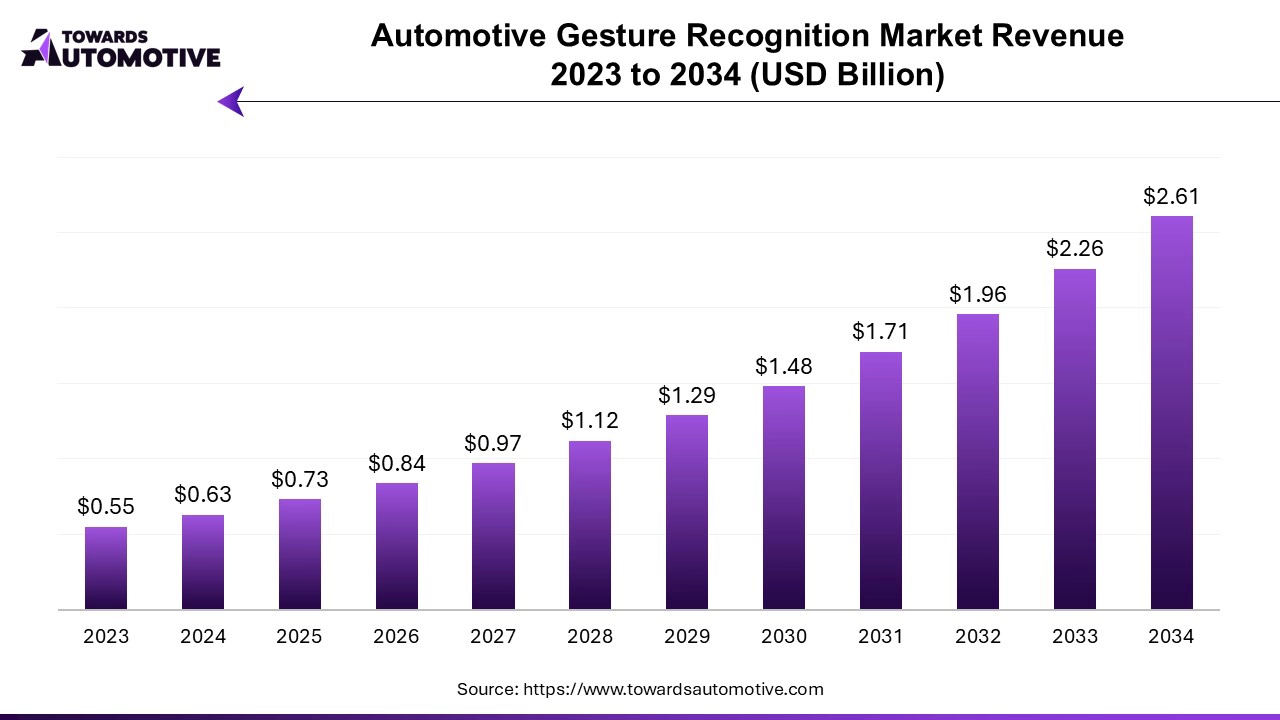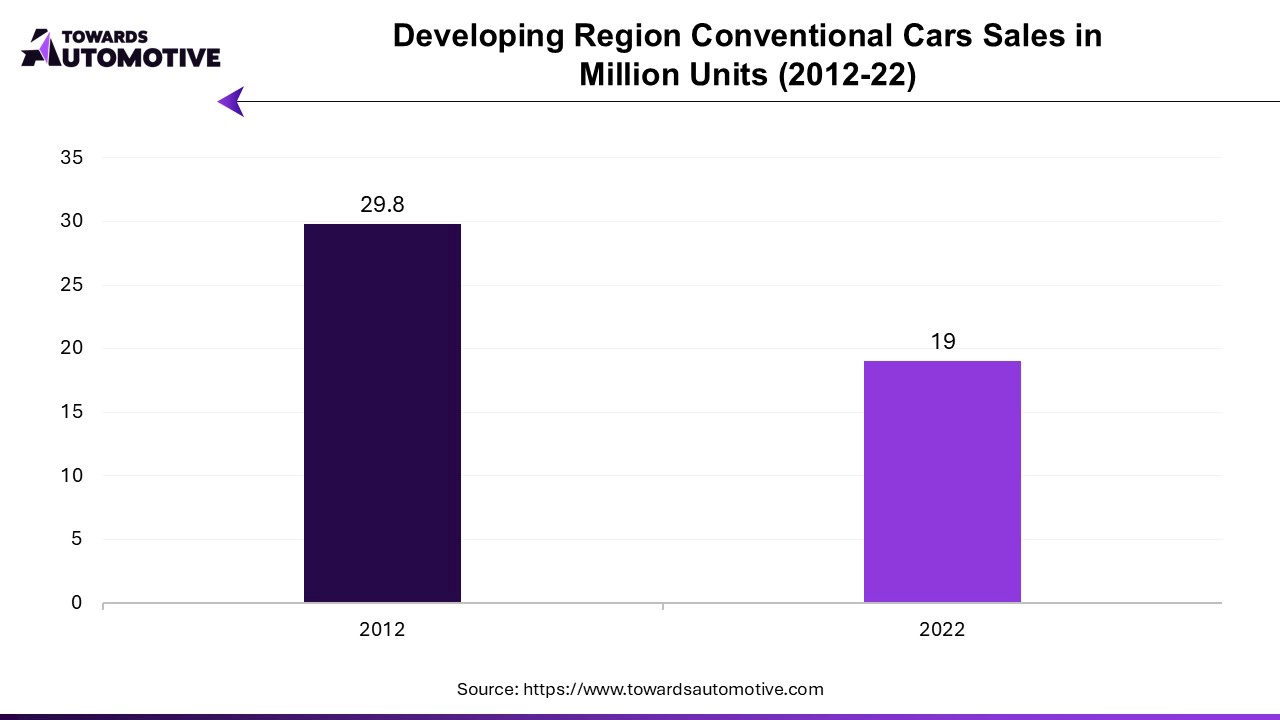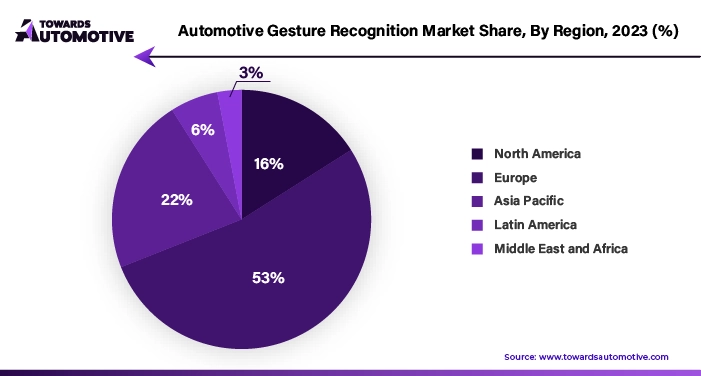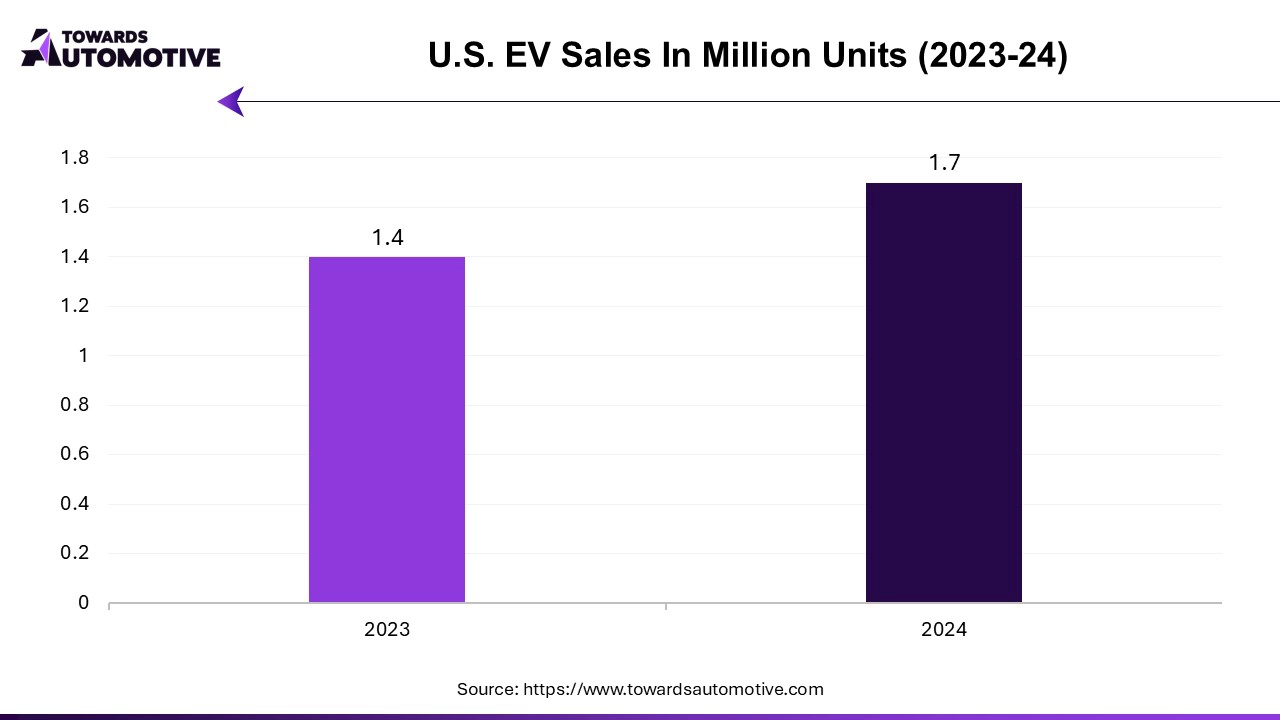September 2024
The global automotive gesture recognition market size is calculated at USD 0.63 billion in 2024 and is expected to be worth USD 2.61 billion by 2034, expanding at a CAGR of 15.19% from 2024 to 2034.

Unlock Infinite Advantages: Subscribe to Annual Membership
The automotive gesture recognition market is rapidly evolving, driven by advancements in technology and changing consumer preferences for more intuitive and convenient vehicle interactions. Gesture recognition systems use sensors and cameras to interpret the movements and gestures of drivers and passengers, enabling a hands-free experience for controlling various vehicle functions. This technology enhances user experience by allowing occupants to interact with in-car systems, such as infotainment, climate control, and navigation, through simple hand gestures, thereby minimizing distractions and promoting safer driving.
As vehicles become increasingly equipped with advanced driver-assistance systems (ADAS) and infotainment technologies, the demand for gesture recognition solutions is expected to surge. Automakers are increasingly integrating these systems into their vehicles to provide a seamless and personalized driving experience. Gesture recognition can facilitate various functions, such as adjusting audio volume, answering calls, or changing navigation settings, all without requiring physical contact with controls. This not only enhances convenience but also aligns with the growing trend toward touchless technology in the automotive industry.
Additionally, the rise of electric and autonomous vehicles is further propelling the automotive gesture recognition market. As these vehicles often come with advanced user interfaces, gesture recognition can play a vital role in allowing occupants to interact with digital displays without the need for traditional buttons or knobs. The technology also contributes to the futuristic appeal of electric and self-driving cars, attracting tech-savvy consumers who value innovation and modernity.
Artificial intelligence (AI) plays a crucial role in the automotive gesture recognition market by enhancing the accuracy, efficiency, and functionality of gesture-based systems in vehicles. AI algorithms enable these systems to interpret a wide range of gestures, including hand movements, body language, and facial expressions, allowing for more natural and intuitive interactions between drivers, passengers, and the vehicle’s interface.
One of the primary applications of AI in gesture recognition is in the processing of data collected by sensors and cameras. AI algorithms analyze input from these devices to identify and differentiate between various gestures accurately. This capability is particularly important in real-time applications, where quick and precise recognition is essential for ensuring a seamless user experience. Machine learning, a subset of AI, further enhances gesture recognition by allowing systems to learn from user interactions over time. As the system collects more data on how users typically interact, it becomes more adept at predicting and understanding their gestures, reducing the likelihood of misinterpretations.
AI also contributes to improving safety in vehicles by minimizing distractions for drivers. Gesture recognition systems powered by AI can allow drivers to control in-car functions without taking their eyes off the road. For example, drivers can adjust the audio system, navigate, or manage calls through simple hand gestures, reducing the need for physical controls and enhancing focus on driving.
Additionally, AI enhances the customization of in-car experiences. By analyzing user preferences and behavior patterns, gesture recognition systems can adapt to individual users, making interactions more personal and user-friendly. This ability to tailor experiences is especially valuable in modern vehicles that offer advanced connectivity features and infotainment options.
Developments in sensor technology play a crucial role in driving the growth of the automotive gesture recognition market by enhancing the accuracy, reliability, and responsiveness of gesture recognition systems. Advanced sensors, such as 3D depth cameras and infrared sensors, enable vehicles to capture a broader range of gestures and interpret them in real time, significantly improving user interaction. These sophisticated sensors can function effectively in various environmental conditions, including low light or adverse weather, ensuring consistent performance regardless of external factors.
Moreover, improvements in sensor miniaturization and integration have made it easier for automakers to incorporate gesture recognition systems into new vehicle designs without compromising aesthetics or functionality. As consumer demand for intuitive and user-friendly interfaces continues to rise, the reliance on these advanced sensor technologies becomes increasingly vital. Additionally, the integration of AI and machine learning with advanced sensors allows for continuous learning and adaptation to individual user behaviors, further enhancing personalization and user experience.
The automotive gesture recognition market faces several restraints that may hinder its growth. One significant challenge is the high development and implementation costs associated with advanced gesture recognition systems, which may deter smaller manufacturers from adopting the technology. Additionally, concerns over accuracy and reliability, particularly in varying environmental conditions, can limit consumer confidence and acceptance. Privacy issues also arise, as gesture recognition systems often involve data collection and processing, raising concerns about user security. Furthermore, the complexity of integrating gesture recognition with existing vehicle systems poses technical hurdles, potentially slowing down widespread adoption across the automotive industry.
The integration of gesture recognition with voice recognition technologies creates significant opportunities in the automotive gesture recognition market by enhancing user interaction and improving overall driving safety. As consumers increasingly demand seamless and intuitive ways to control vehicle functions, combining these two technologies allows for a more versatile and comprehensive interface. For instance, drivers can use gestures to initiate commands or navigate menus while simultaneously employing voice commands for more complex tasks, such as making phone calls or adjusting navigation settings. This synergy reduces the cognitive load on drivers, allowing them to keep their attention on the road.
Furthermore, the integration enhances personalization; systems can learn individual user preferences for both gestures and voice commands, adapting to their unique styles over time. This capability not only improves convenience but also fosters a more engaging in-car experience. As automakers prioritize safety, the ability to use both gesture and voice controls minimizes physical distractions, supporting a safer driving environment. Additionally, as electric and autonomous vehicles proliferate, the demand for advanced interaction technologies will grow, positioning the combined gesture and voice recognition systems as essential components in modern automotive design.
The camera-based segment held the largest share of the market. The camera-based segment is a key driver of growth in the automotive gesture recognition market, primarily due to its ability to accurately interpret and analyze hand movements and body language. By utilizing advanced imaging technologies, such as infrared and 3D cameras, these systems can detect a wide range of gestures in various lighting conditions, enhancing their reliability and effectiveness. Camera-based gesture recognition systems enable drivers to control in-car functions, such as navigation, audio, and climate settings, without physical contact, thus minimizing distractions and improving overall safety.
Additionally, the integration of artificial intelligence (AI) and machine learning algorithms into camera-based systems allows for continuous learning and adaptation to individual user preferences, making interactions more intuitive and personalized. As vehicle manufacturers increasingly prioritize user experience and safety, the demand for camera-based gesture recognition systems is surging. Furthermore, the shift towards electric and autonomous vehicles, which often feature advanced digital interfaces, further propels the need for efficient gesture control solutions.
The infotainment segment held the highest share of the market. The infotainment segment significantly drives the growth of the automotive gesture recognition market by enhancing user experience and promoting seamless interaction between drivers and vehicle systems. As modern vehicles increasingly integrate sophisticated infotainment systems, the demand for intuitive controls that minimize driver distraction has escalated. Gesture recognition technology allows drivers to manage various infotainment functions, such as navigation, audio playback, and communication, through simple hand movements, enabling them to maintain focus on the road while accessing essential features.
Moreover, the rise of connected vehicles and the proliferation of smartphone-like interfaces have led to higher consumer expectations for advanced infotainment experiences. Gesture recognition systems, often powered by artificial intelligence (AI) and machine learning, can learn user preferences and adapt to individual behaviors, further personalizing the in-car experience. This adaptability enhances user satisfaction and promotes brand loyalty among consumers.
As automakers continue to prioritize driver and passenger convenience, the integration of gesture recognition in infotainment systems is becoming increasingly common. This trend not only enhances safety by reducing physical interaction with controls but also positions gesture recognition as a vital component of modern automotive design, driving the overall growth of the automotive gesture recognition market.
The passenger cars segment led the industry. Passenger cars are a significant driver of growth in the automotive gesture recognition market, primarily due to the increasing consumer demand for enhanced convenience and safety features. As the automotive industry evolves, consumers are seeking vehicles equipped with advanced technologies that improve the overall driving experience. Gesture recognition systems provide a hands-free way for drivers and passengers to interact with in-car functions, such as navigation, entertainment, and climate control, allowing for intuitive operation without the need to physically touch controls.
Moreover, as automakers focus on differentiating their models in a competitive market, integrating gesture recognition technology into passenger cars has become an attractive selling point. This feature not only enhances user experience but also contributes to improved safety by reducing distractions associated with manual controls. Additionally, the rise of electric and autonomous vehicles, which often come with advanced infotainment systems, further boosts the demand for gesture recognition in passenger cars. As these vehicles increasingly incorporate digital interfaces that require intuitive interaction, gesture recognition is becoming an essential component of modern automotive design.


North America dominated automotive gesture recognition market. The growth of the automotive gesture recognition market in North America is significantly influenced by the rising consumer demand for advanced features, technological advancements, and the growth of electric and autonomous vehicles. As consumers increasingly prioritize convenience, safety, and an enhanced driving experience, they are drawn to vehicles equipped with cutting-edge technologies, including gesture recognition systems. These systems offer a seamless, hands-free interface for controlling various in-car functions, allowing drivers to adjust navigation, audio, and climate settings with simple hand gestures. This demand for intuitive interaction is driving automakers to integrate advanced gesture recognition technologies into their vehicles, creating a competitive edge in a rapidly evolving market.
Technological advancements play a pivotal role in this growth, as innovations in artificial intelligence (AI), machine learning, and sensor technologies improve the accuracy and responsiveness of gesture recognition systems. Enhanced data processing capabilities enable these systems to understand and interpret a wider range of gestures in real time, significantly improving user experience. Moreover, the integration of AI allows these systems to learn from user interactions, adapting to individual preferences and enhancing personalization, which further attracts consumers.
The rise of electric and autonomous vehicles in North America creates additional opportunities for gesture recognition technology. As electric vehicles often feature more advanced digital interfaces, gesture recognition systems provide a natural and intuitive way for users to interact with complex infotainment and control systems. In autonomous vehicles, where traditional controls may become less relevant, gesture recognition offers a novel means of communication between the occupants and the vehicle, enhancing user engagement and satisfaction.

Asia Pacific is expected to grow with the highest CAGR during the forecast period. The growth of the automotive gesture recognition market in the Asia-Pacific (APAC) region is significantly driven by the rising adoption of advanced driver assistance systems (ADAS), government initiatives and regulatory support, and strategic collaborations and partnerships. The increasing integration of ADAS features into vehicles has created a demand for intuitive and efficient control systems, with gesture recognition technology playing a pivotal role. By enabling drivers to manage functions like navigation, infotainment, and climate control through simple hand movements, gesture recognition systems enhance safety and convenience, thus aligning with the broader objectives of ADAS to reduce distractions and improve road safety. As consumers become more safety-conscious, automakers are compelled to incorporate these systems to meet evolving expectations.
Government initiatives across APAC countries further fuel the adoption of advanced automotive technologies. Many governments are promoting smart mobility solutions and investing in initiatives that encourage the development of connected and automated vehicles. Regulatory support for innovative technologies, including gesture recognition, incentivizes manufacturers to adopt these systems, ensuring compliance with safety and connectivity standards. By establishing a conducive environment for technological advancement, governments in the region are playing a crucial role in driving market growth.
Additionally, strategic collaborations and partnerships between automotive manufacturers and technology companies are facilitating the rapid development and integration of gesture recognition systems. These partnerships leverage expertise in artificial intelligence (AI), machine learning, and sensor technologies, enabling automakers to enhance the functionality and accuracy of gesture recognition solutions. As a result, the combined effect of increasing ADAS adoption, supportive government policies, and collaborative efforts between industry players is creating a dynamic landscape for the automotive gesture recognition market in APAC, positioning it for significant growth in the coming years.
By Sensor Type
By Vehicle Type
By Function
By Application
By Region
September 2024
September 2024
September 2024
September 2024
Dr. Arjun Patel is a distinguished expert in the automotive industry, holding advanced degrees in Automotive Engineering and Mechanical Engineering. His expertise spans automotive market dynamics, technological advancements, and sustainable practices. Dr. Patel excels in conducting in depth research and analysis on market trends, consumer preferences, and the economic implications within the automotive sector. He is renowned for his insightful publications on topics such as electric vehicles, autonomous driving technologies, and the evolution of sustainable transportation solutions. Dr. Patels research contributions have significantly advanced understanding in the field, earning him recognition as a leading authority in automotive research and analysis.
We offer automotive expertise for market projections and customizable research, adaptable to diverse strategic approaches.
Contact Us